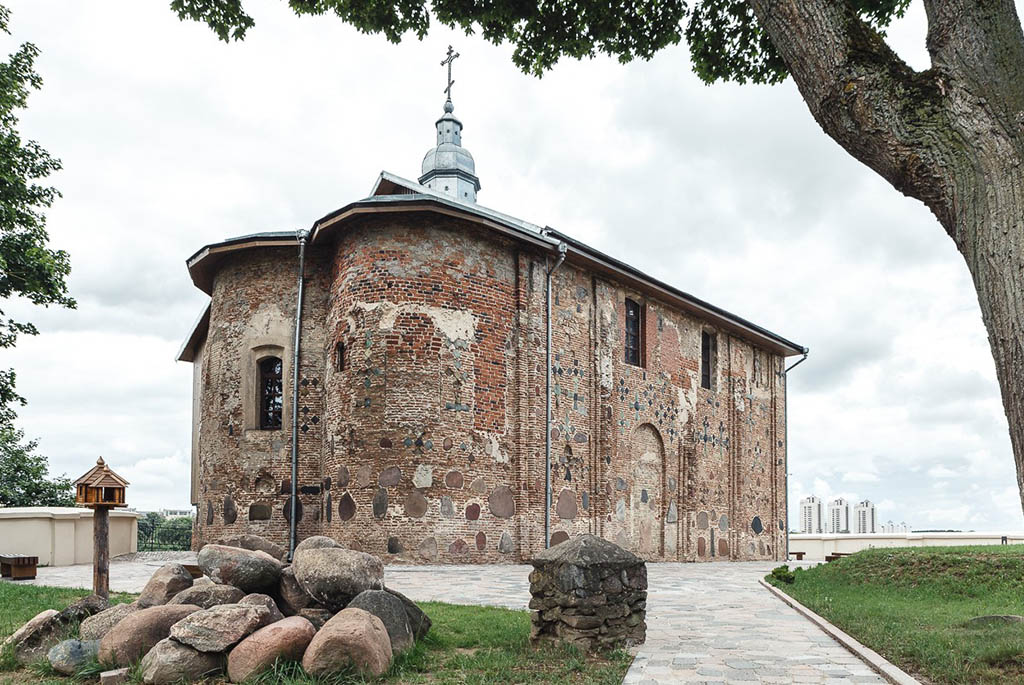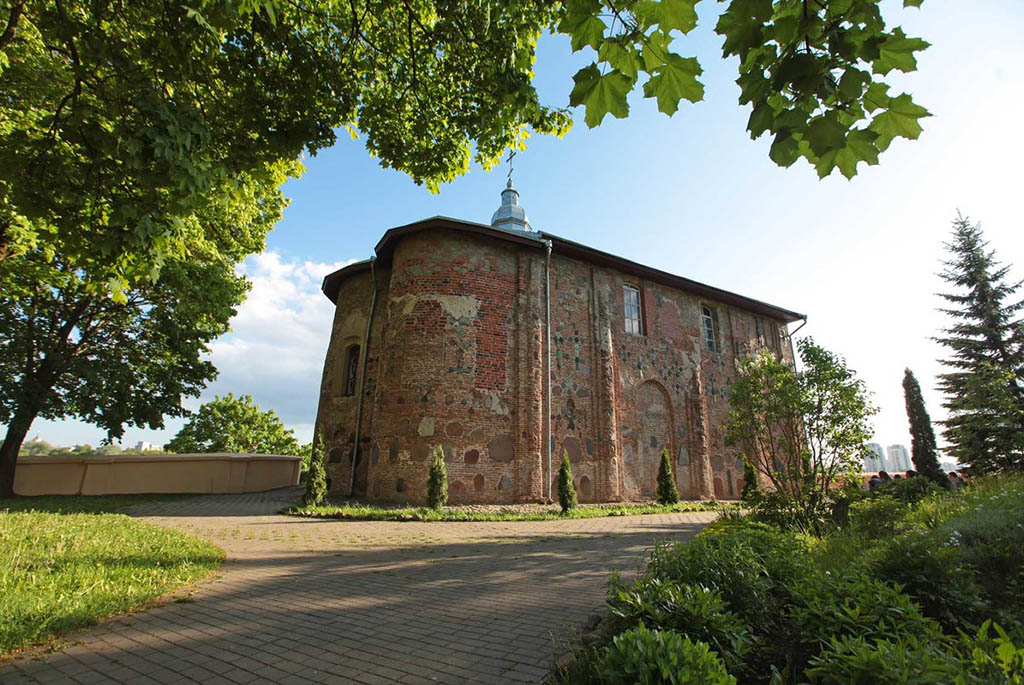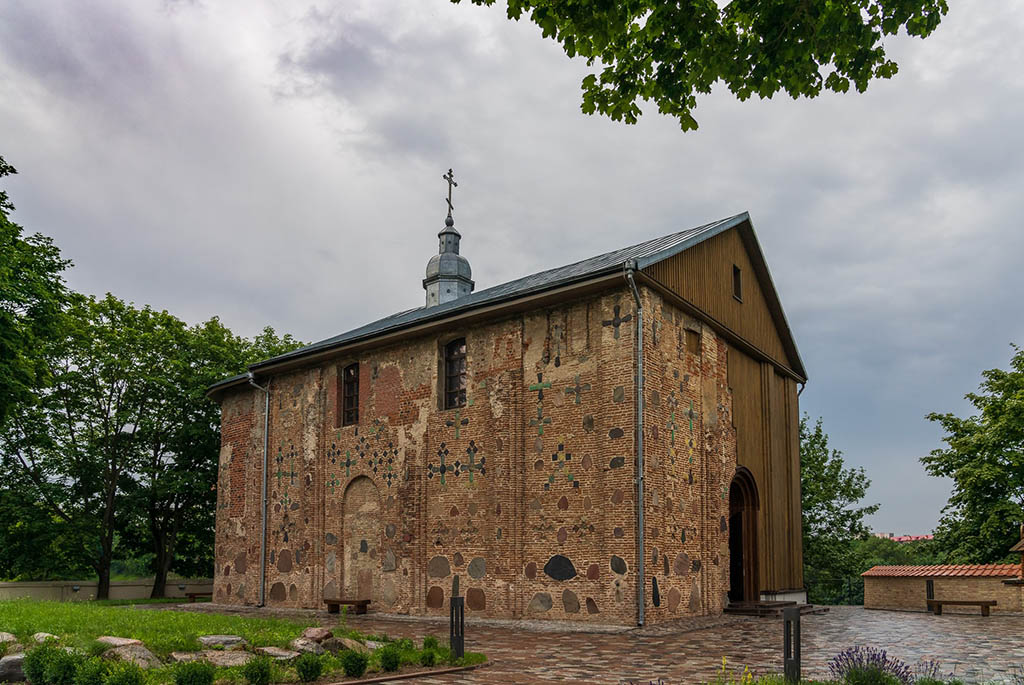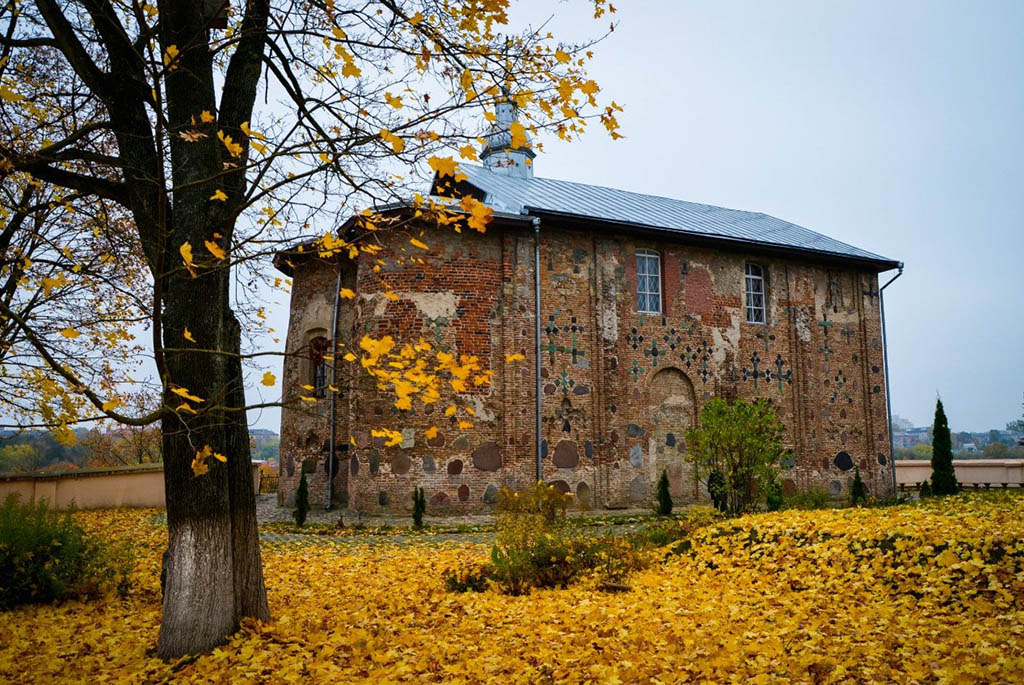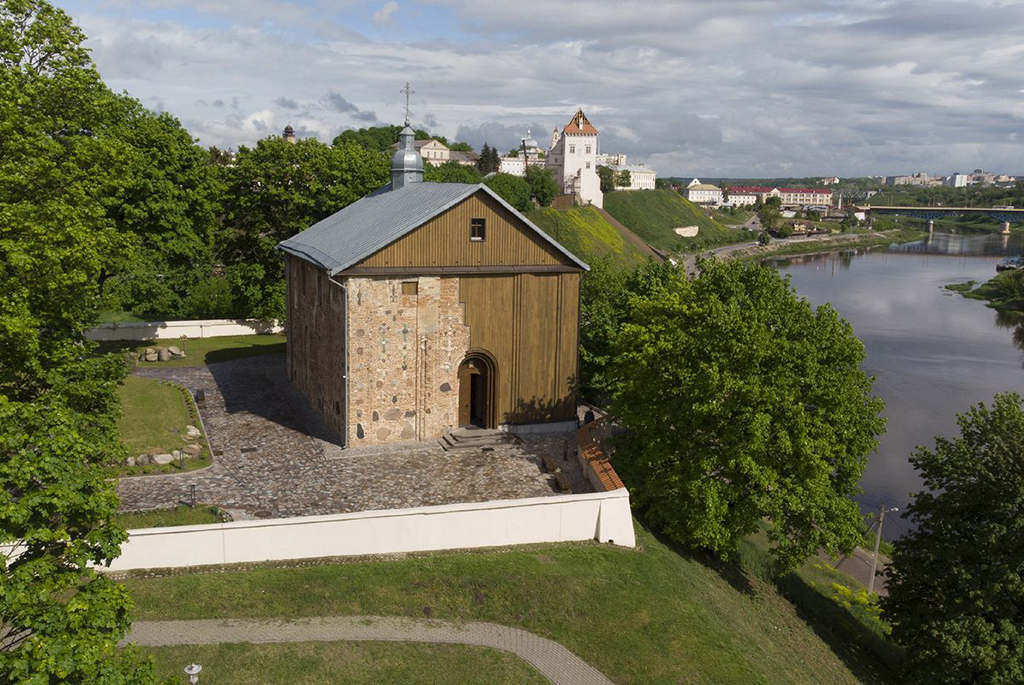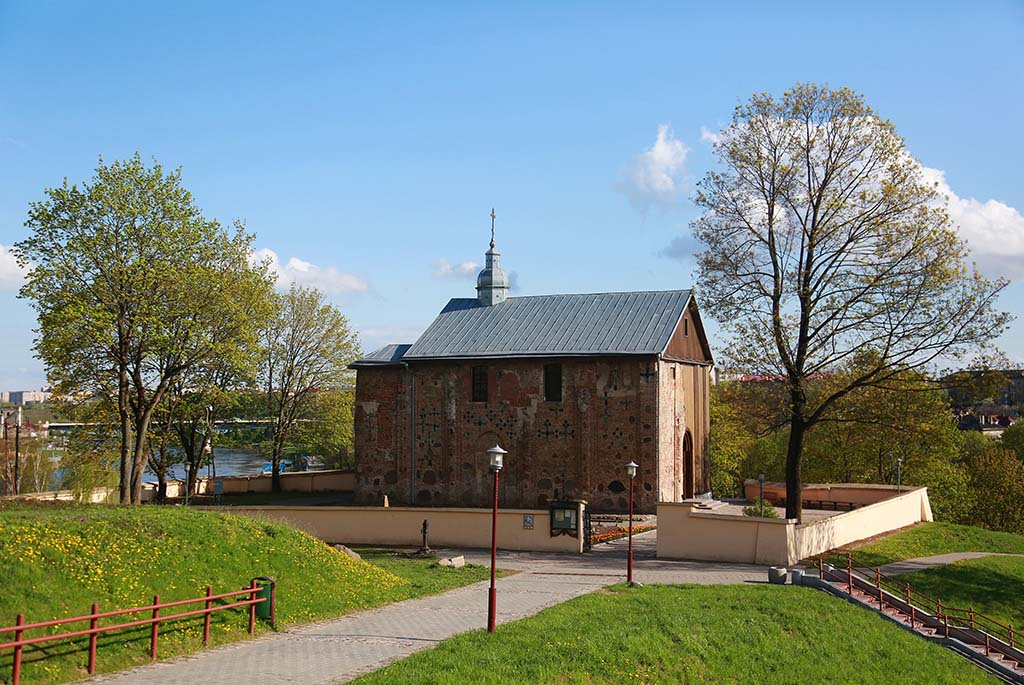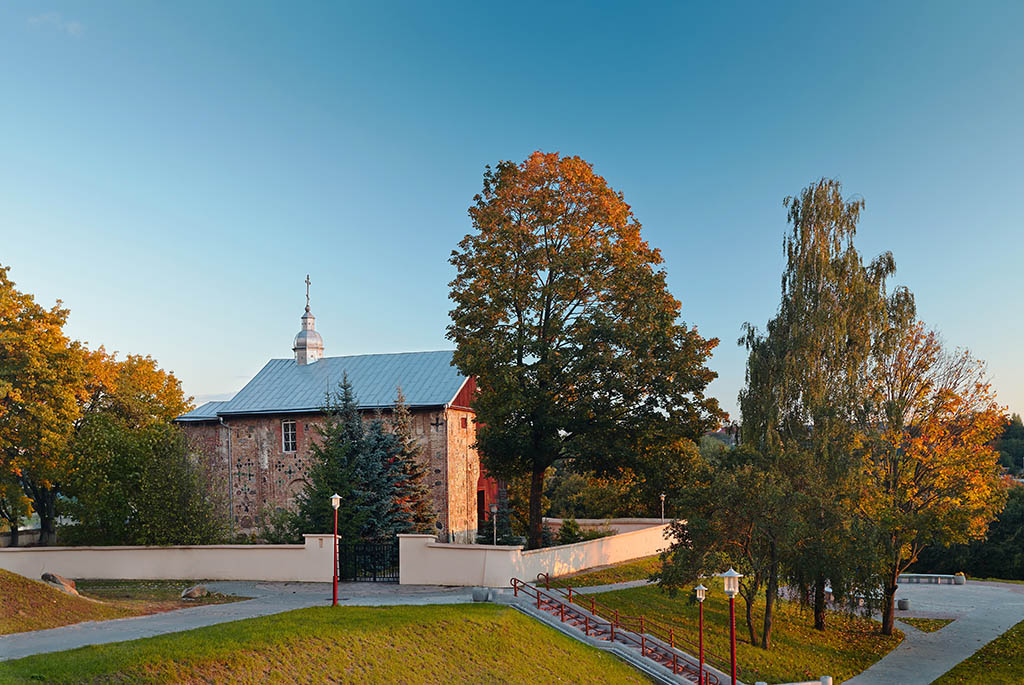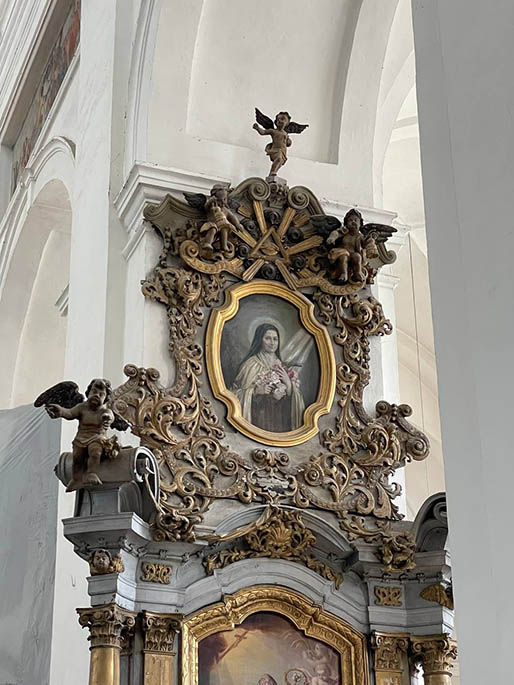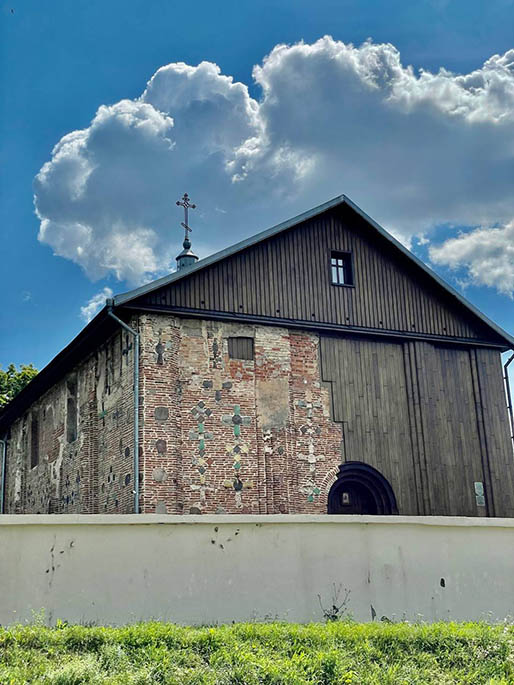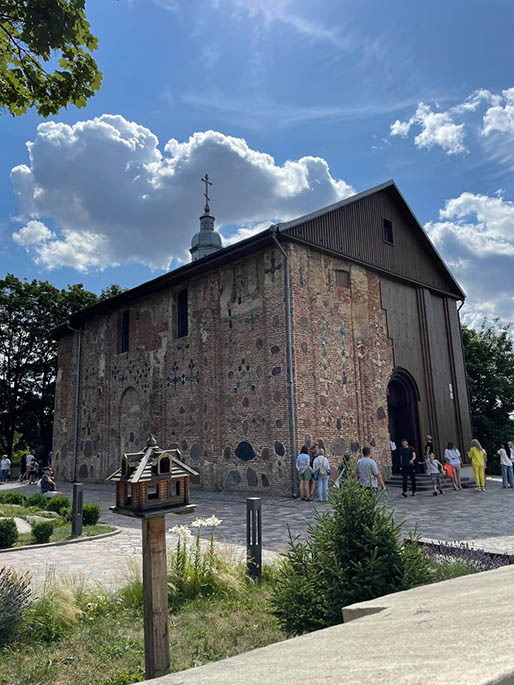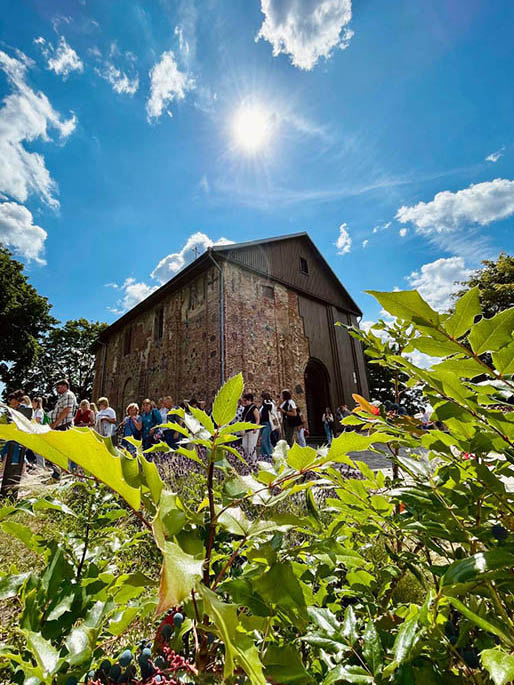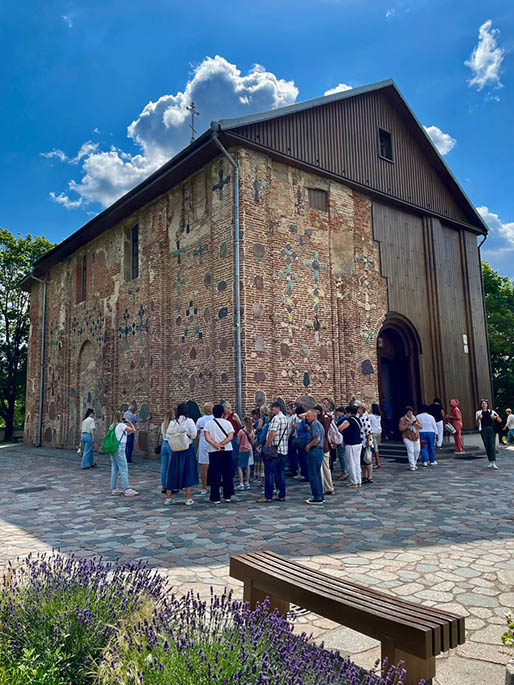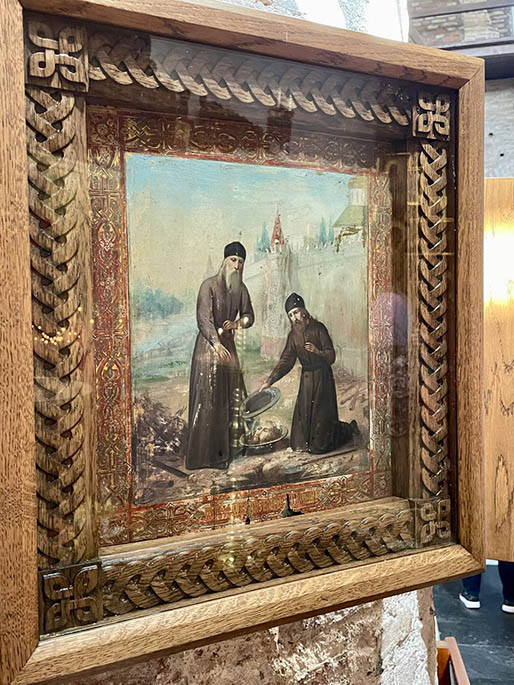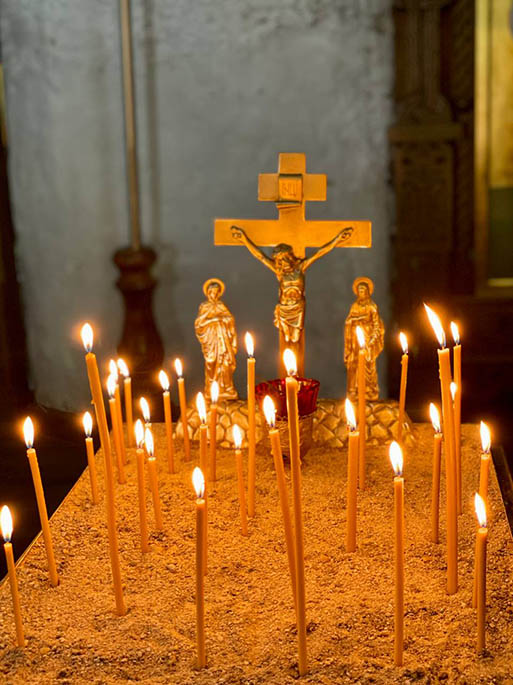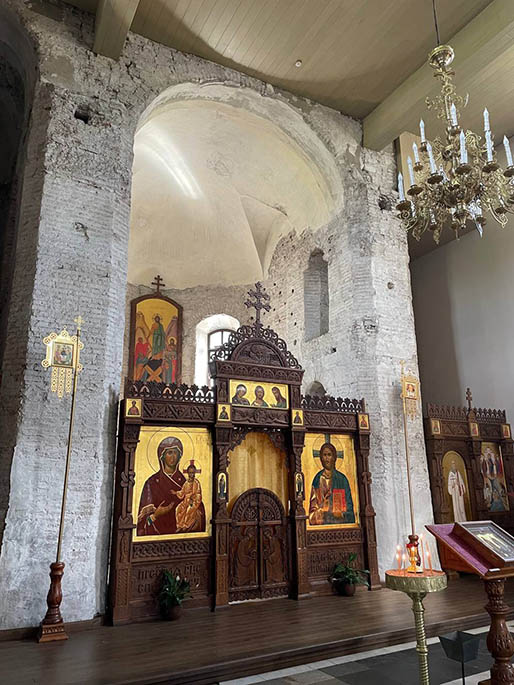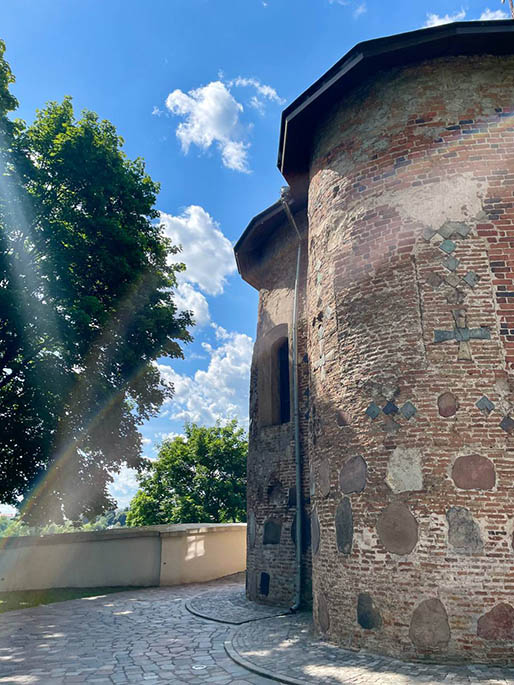This stone church has been towering on the banks of the Neman River for over 800 years. Its exact foundation date is unknown, but it is believed that it was built no later than 1183. According to one theory, the church was constructed during the reign of princes Boris and Gleb, which is reflected in its name. Another theory suggests it was founded slightly later by the sons of these princes.
The church is also known as Kolozhskaya. There is no consensus on the origin of this name. Some historians believe it comes from the name of the area where the church was built – Kolozhan. Others associate it with Vitautas' attack on the Pskov fortress of Kolozhe, and the subsequent resettlement of Pskov prisoners near the church.
Architectural Features
The architectural features of the Borisoglebskaya Church reflect the traditions of Byzantine cult construction. However, its design is unique among ancient Russian church architecture.
The Kolozhskaya Church is a six-pillar church with three apses. Its support pillars, unusually round for Orthodox cult buildings, are a distinctive feature. The double walls are made of thin flat fired bricks with inserts of smooth boulders. Despite its small size, the thinness of the materials makes the church appear spacious and capacious. Numerous ceramic vessels are embedded in the inner layer of the walls to enhance acoustics, with their necks protruding outside. The church's chants sound particularly resonant and effective here.
The facades were adorned with majolica in the form of crosses and smooth colored boulders. The roof was covered with glazed tiles. Inside, there was a carved wooden altar, walls decorated with frescoes, and a mosaic floor.
Church History from Foundation to Present
After a fire destroyed the main city church at the end of the 12th century, the Borisoglebskaya Church became the primary religious center of the city. In the 16th century, a male monastery was established at the church.
Due to continuous wars and battles in Grodno, the church was repeatedly destroyed and restored. It suffered most in the 15th century during an attack by Moscow troops.
For a long time, the main relic of the Borisoglebskaya Church was a miraculous icon of the Mother of God, painted in the 16th century. Lost during World War I, the original icon has not been found to date, but in 2019, an exact copy of the miraculous image was brought to the church.
The church's location on a sandy hill led to unfortunate consequences. Gradually eroded by the waters, the hill deteriorated. In the mid-19th century, due to a landslide, a significant portion of the church walls collapsed into the Neman. Further ground collapses at the end of the 19th century caused new damages. In the early 20th century, the rising bank of the Neman was reinforced, and lighter wooden walls replaced the damaged stone ones.
During the Soviet era, the church was closed for services and transferred to the Grodno Museum. In the late 1960s, the church building became part of the city's historical and archaeological reserve. In the 1990s, the Borisoglebskaya Church was returned to the Orthodox faithful.
In the early 2000s, after another ground subsidence, the hill was reinforced. In 2017-2018, restoration work was carried out inside the building, and measures were taken to prevent its destruction – installing humidity and temperature sensors, thermal joints, and storm systems to prevent foundation erosion.
Today, the Kolozhskaya Church is an active Orthodox church where services, religious rites, and church holidays are held. Locals come here to pray, and tourists visit to see one of the oldest churches in Belarus, a unique example of ancient cult architecture.
The Borisoglebskaya Church is located 3 kilometers from the Grodno railway station. It can be reached by public transport, with stops at “Vesennyaya Ulitsa” or “Sovetskaya Ploshchad”.
